
The Bottom Line
Introduction & Drive Details
We tend to focus on fire-breathing Gen4 SSDs, and why not? They provide the most excitement in the world of solid-state storage. While high-performance Gen4 SSDs are indeed exciting, they are just a small segment of the solid-state storage industry. The value segment is, in fact, the highest-selling segment of the DIY solid-state drive retail market.
Naturally, performance is king in enthusiast circles but takes a backseat to the cost of ownership when we get into the larger value segment of the retail market. There are basically two approaches taken by different SSD vendors to keep costs down and at the same time offer something that appeals to the value-oriented tech shopper.
These days, the most common approach is using QLC flash arrays to keep build costs low. QLC flash, while cheaper per bit, comes with inherently lower endurance, requires more power to program, slow programming speeds when outside the cache, and typically offers lower overall performance than TLC flash.
The other somewhat less common approach to reducing production costs is what we have here today in the Western Digital WD Blue SN570 DRAMless SSD. Going without onboard DRAM reduces costs considerably, as does the fact that the drive only has only one flash package and a power-sipping 4-channel HMB (Host Memory Buffer) enabled controller. Eliminating the cost of onboard DRAM offsets, TLC flash creates arguably a better overall value for the customer.
As we alluded to earlier, the newly minted WD Blue SN570 is special in that it gives our first look at BiCS 5 flash. WD is tight-lipped and doesn't even mention the SN570 is arrayed with 112-layer BiCS 5. Well, we know it is because our gaming test results say it is. How else could this DRAMless value drive load game levels faster than the legendary WD Black SN850 Gen4 performance juggernaut? It has to be better flash; that's the only way it can happen.
We will tell you right now that the WD Blue SN570 1TB is the first DRAMless SSD we've tested that we can call a legit gaming SSD. And it's not just good at gaming; it's outstanding at gaming. Amazing really.
Drive Details
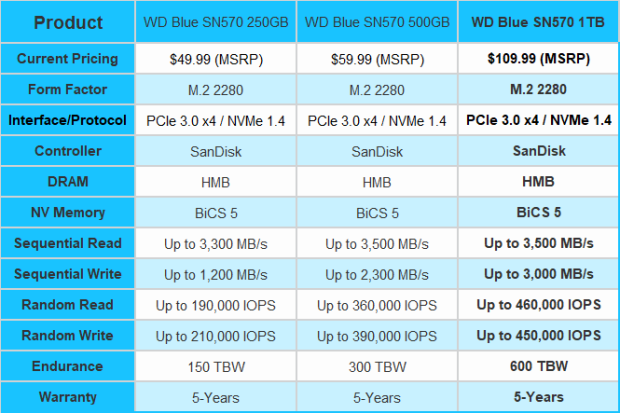
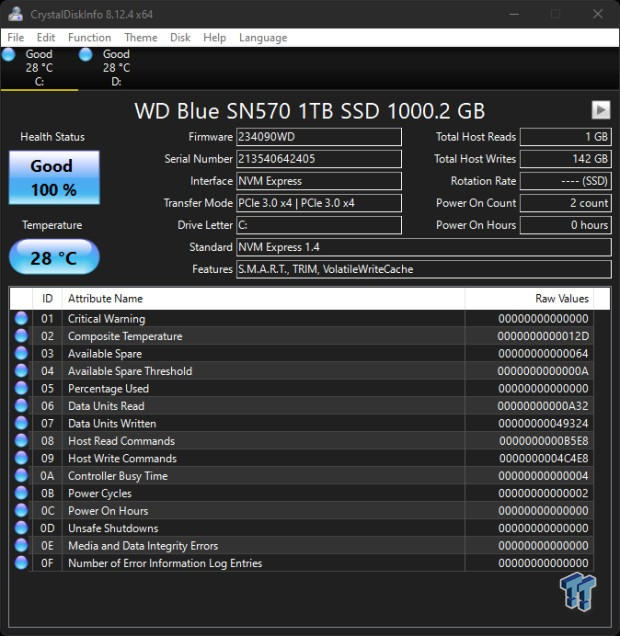
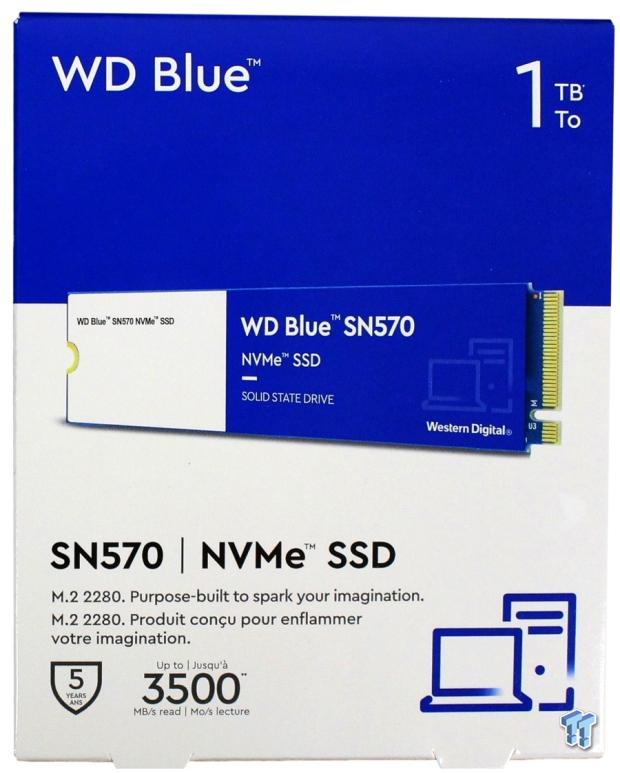
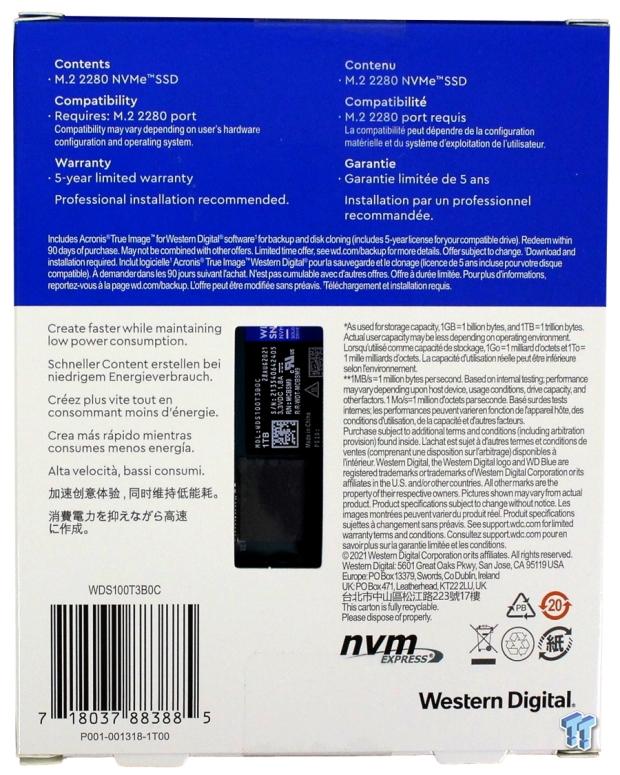


Jon's Test System Specifications
- Motherboard: ASUS ROG Maximus XIII HERO - Buy from Amazon
- CPU: Intel Core i9-11900KF - Buy from Amazon
- Cooler: Alphacool Eissturm Hurricane Copper 45 - Buy from Amazon
- RAM: XPG DDR4 D50 Xtreme 5000MHz 16GB (8GB x 2) - Buy from Amazon
- Video Card: Zotac 2080Ti AMP Edition - Buy from Amazon
- Case: PrimoChill's Praxis Wetbench - Buy from Amazon
- Power Supply: Thermaltake Toughpower GF1 1000W 80+ Gold Buy from Amazon
- OS: Microsoft Windows 11 Pro 64-bit Buy from Amazon

Synthetic Benchmarks: CDM, Anvil, ATTO
CrystalDiskMark
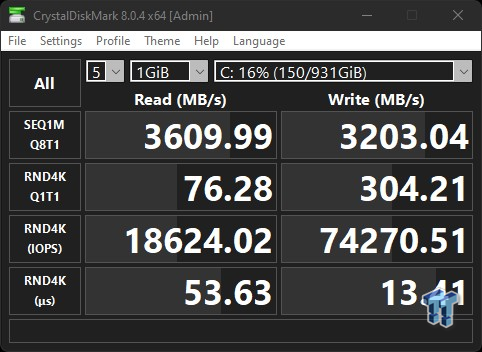
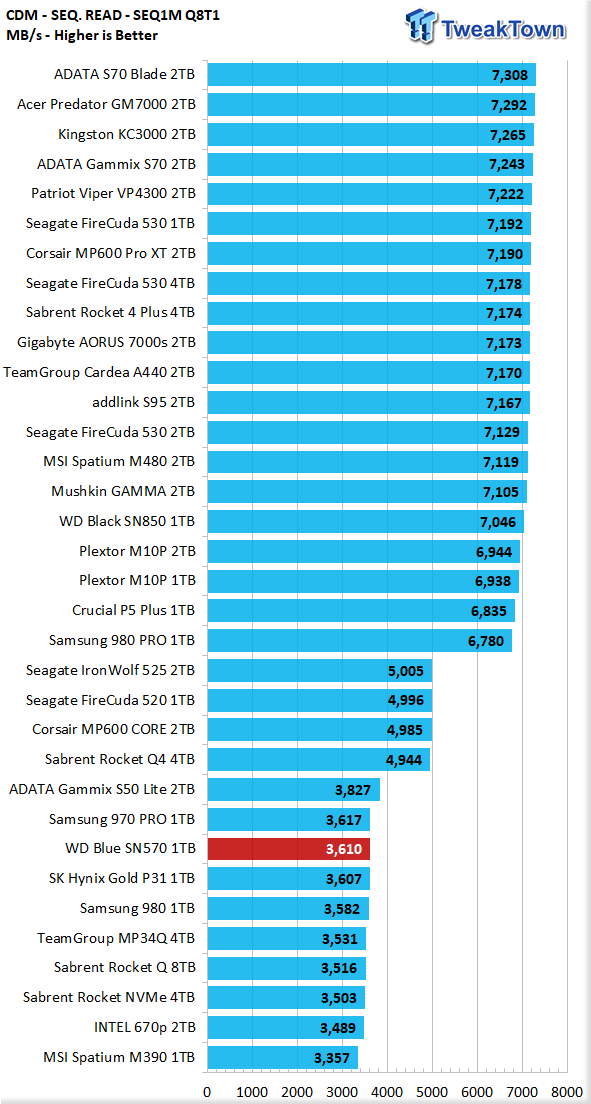
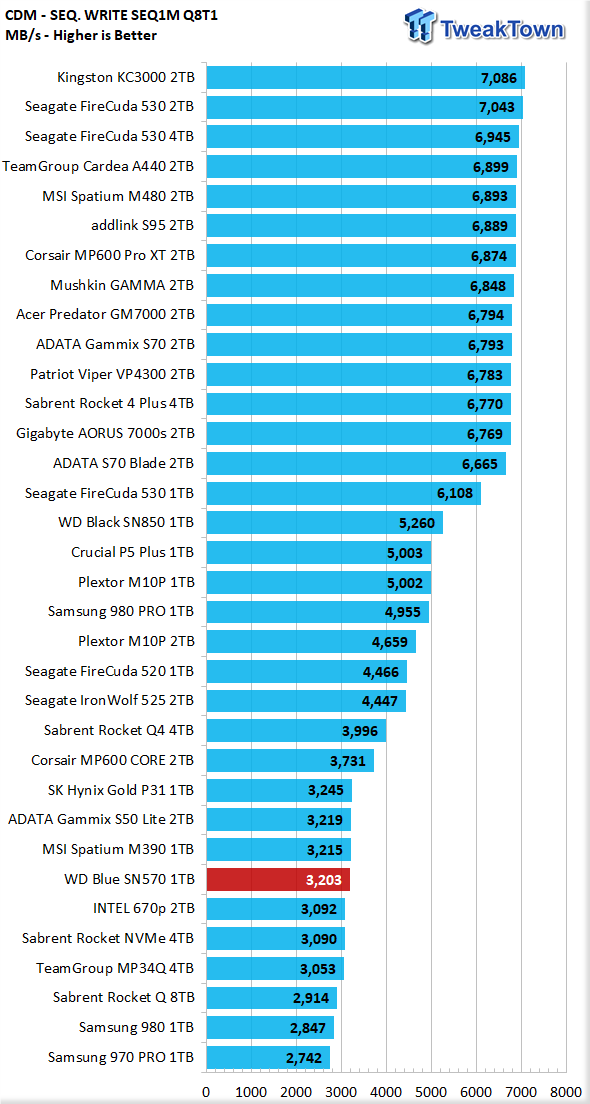
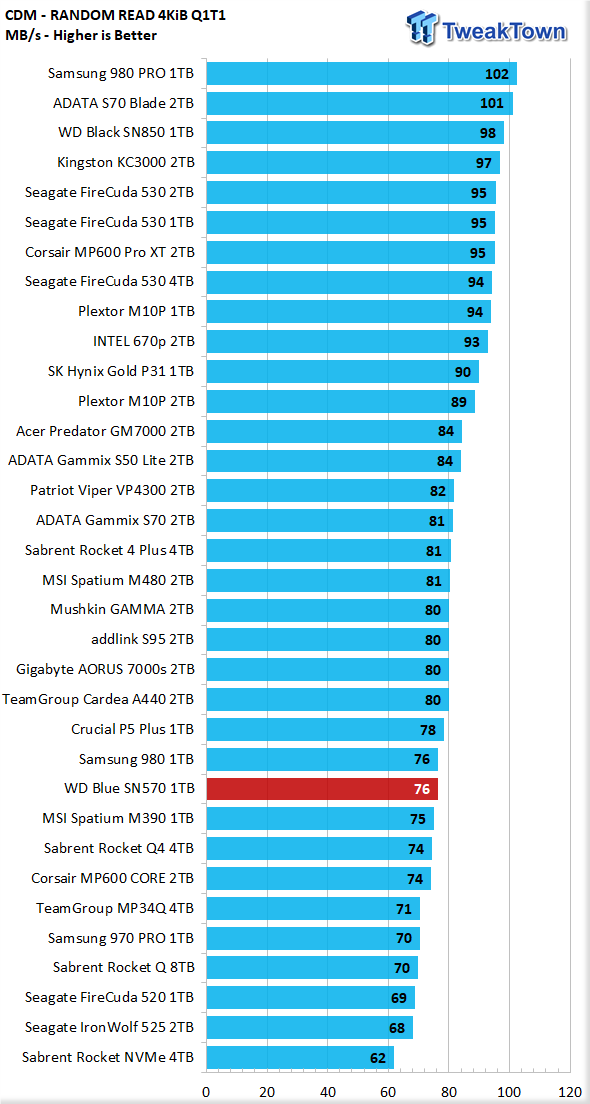
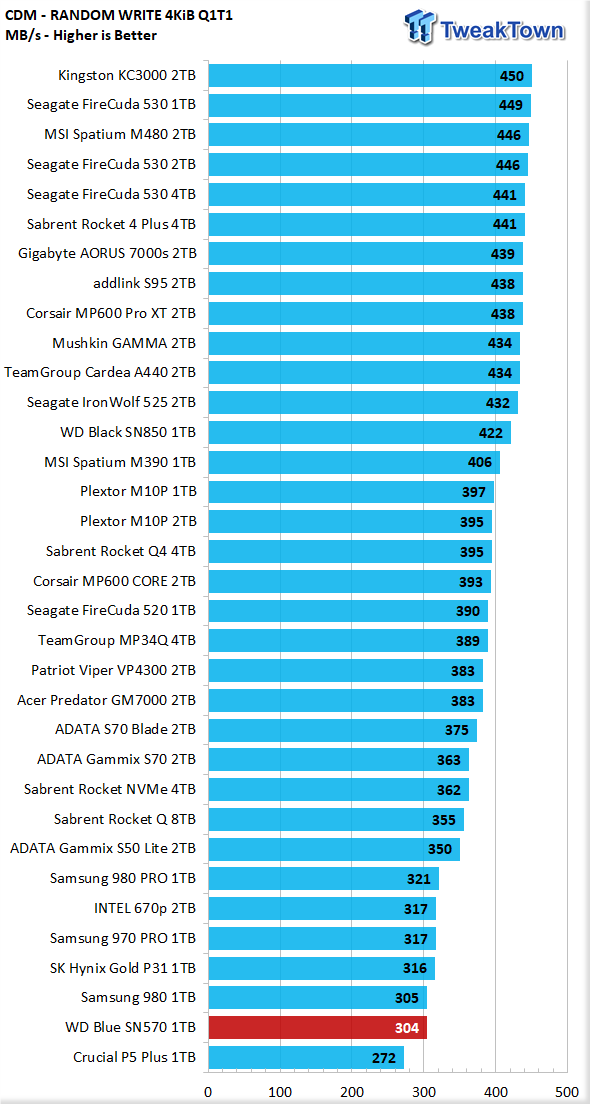
Out of the gate, the WD Blue SN570 1TB demonstrates better than its advertised 3,500/3,000 MB/s sequential throughput. That's easily the highest throughput we've seen from any flash-based DRAMless SSD to date. Wow, impressive and small a bit of evidence that this is indeed BiCS 5 flash.
Anvil's Storage Utilities
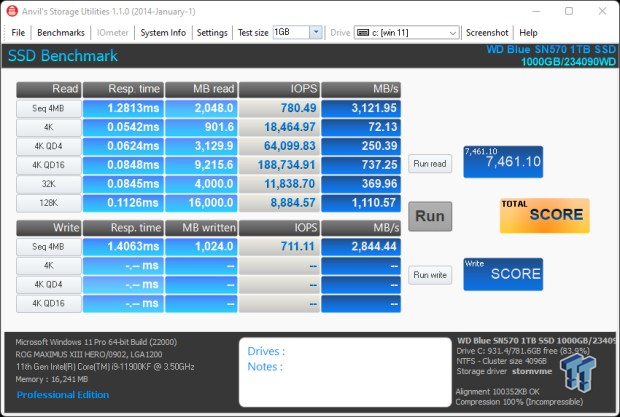
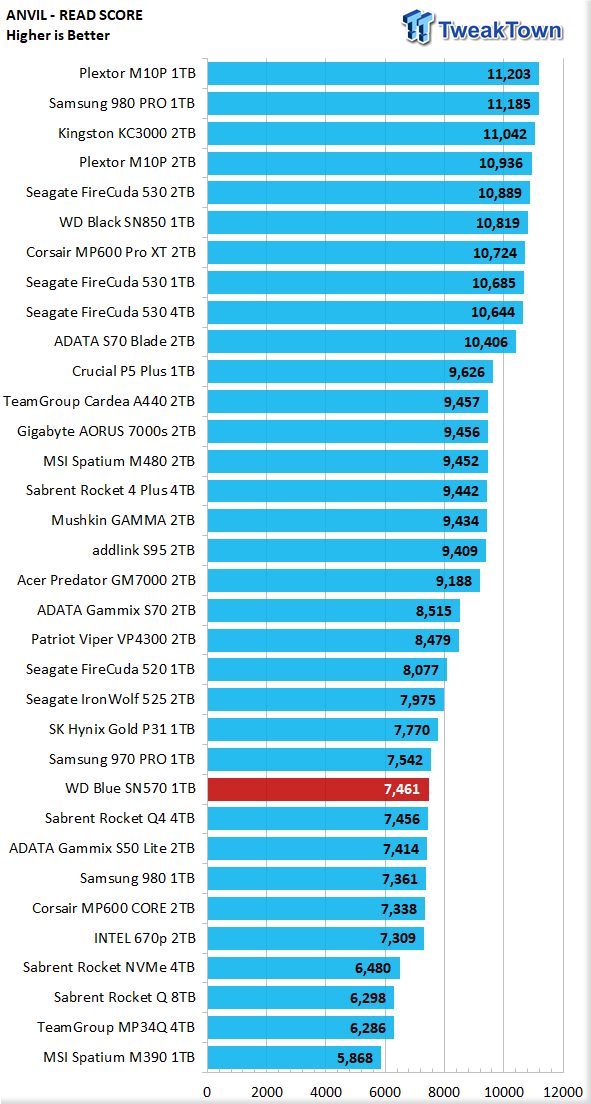
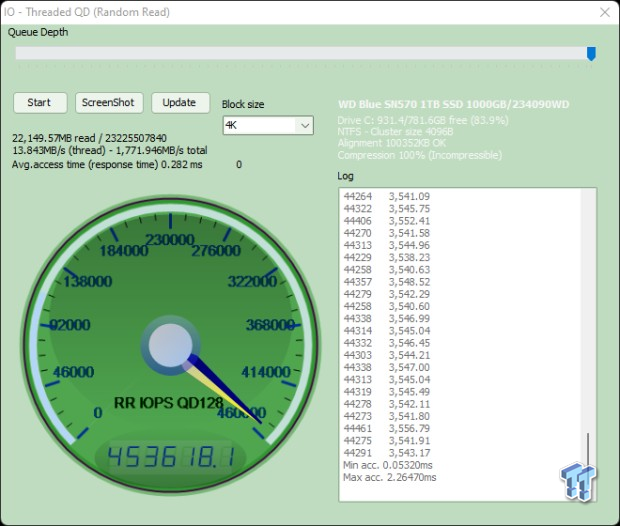
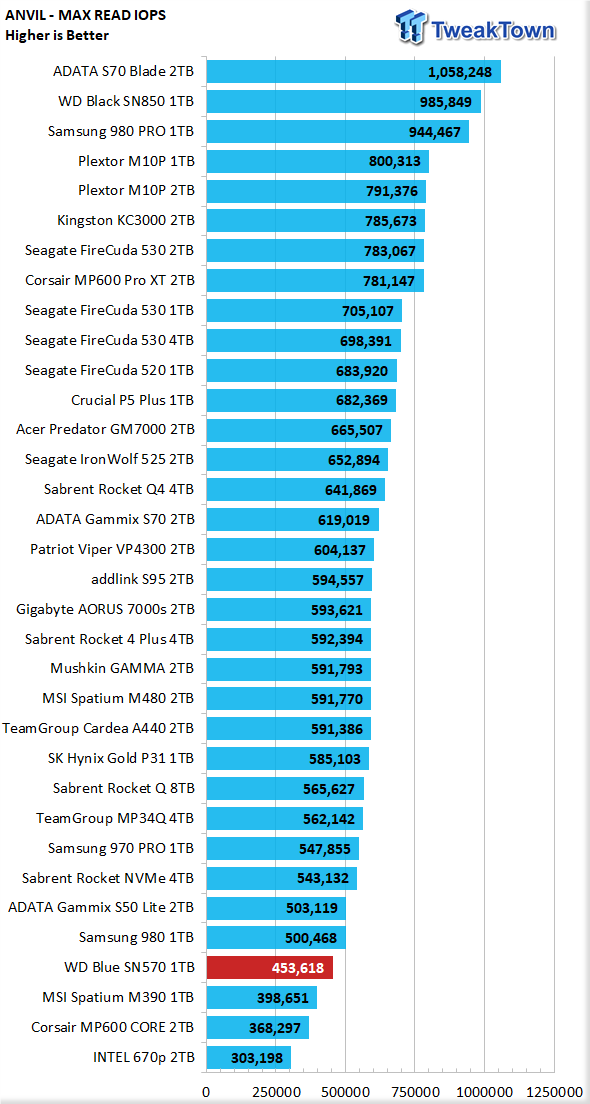
So far, the WD Blue SN570 is proving the be the fastest flash-based DRAMless SSD when serving data to the host. It does so even better than Samsung's amazing DRAMless 980. Wow.
ATTO
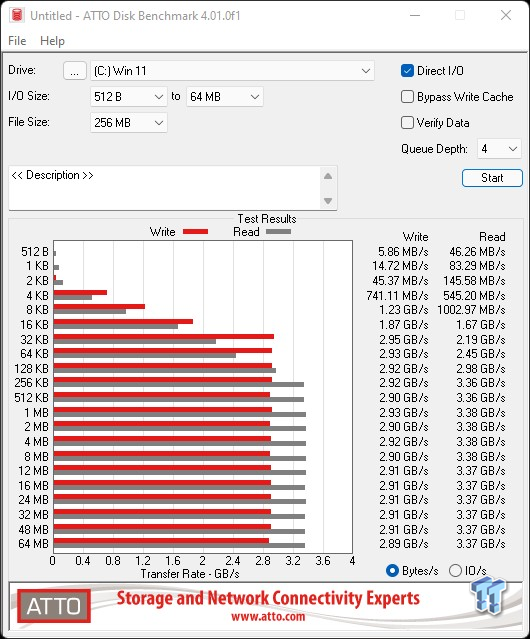
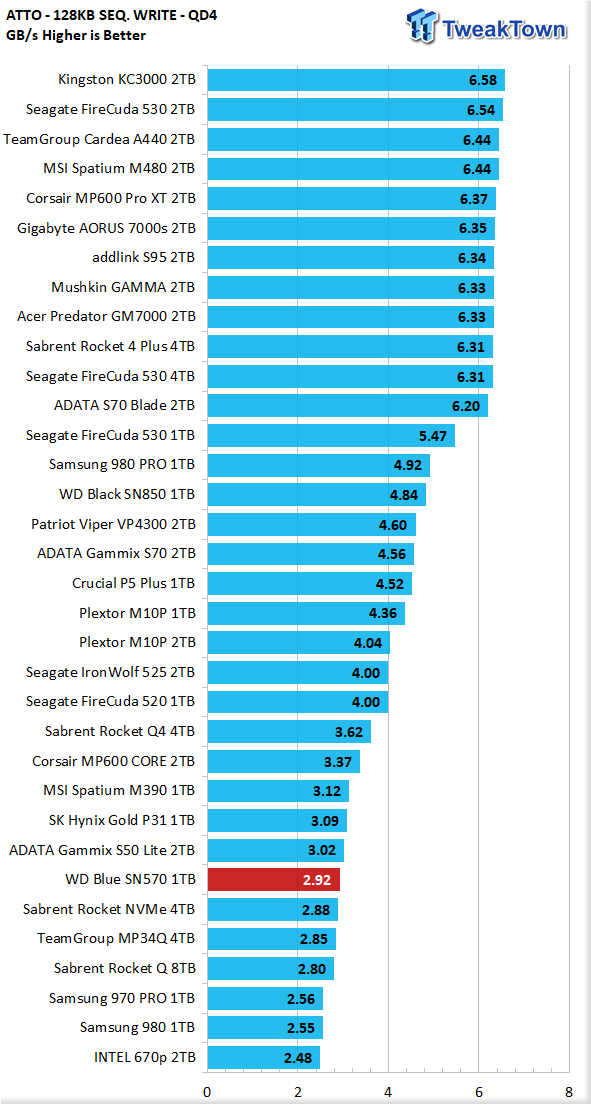
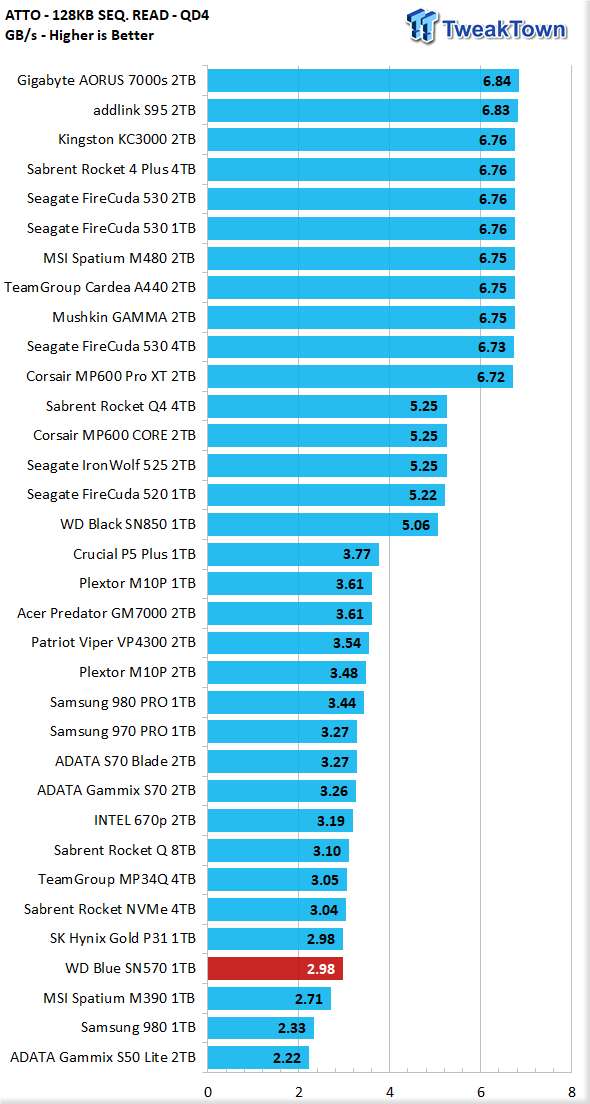
Excellent showing here as well. The WD Blue SN570 again outperforms the powerful Samsung 980. The DRAMless Spatium M390 beats them both when programming (writing) data. However, this is not because it's faster. It's because of the way Phison architecture skips over fully compressible data.
Real-World Testing: Transfers, Gaming, PCM10
Transfer Rates
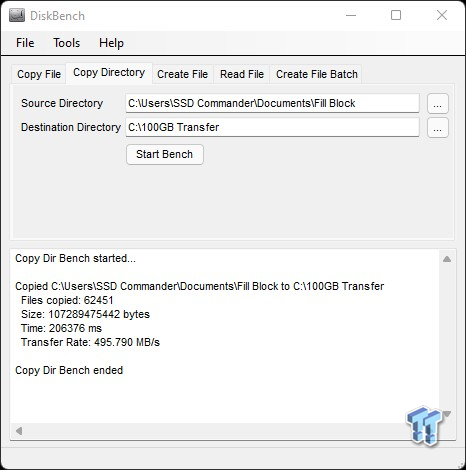
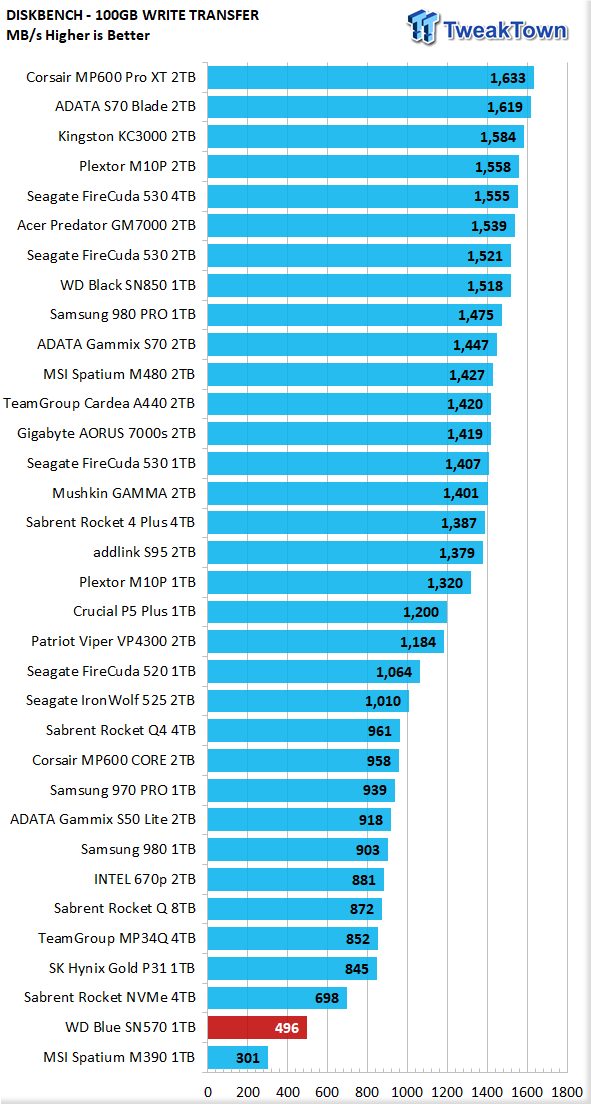
Here's where DRAMless SSDs, except the Samsung 980, traditionally show what they are not great at doing. Programming a huge block of data all at once. But, as we see it, who cares? Writing huge chunks of data is the rarest occurring task in the consumer realm.
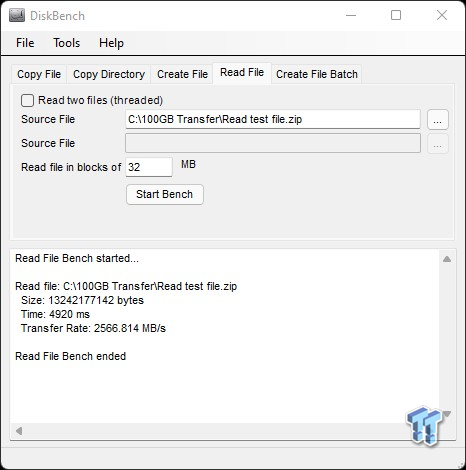
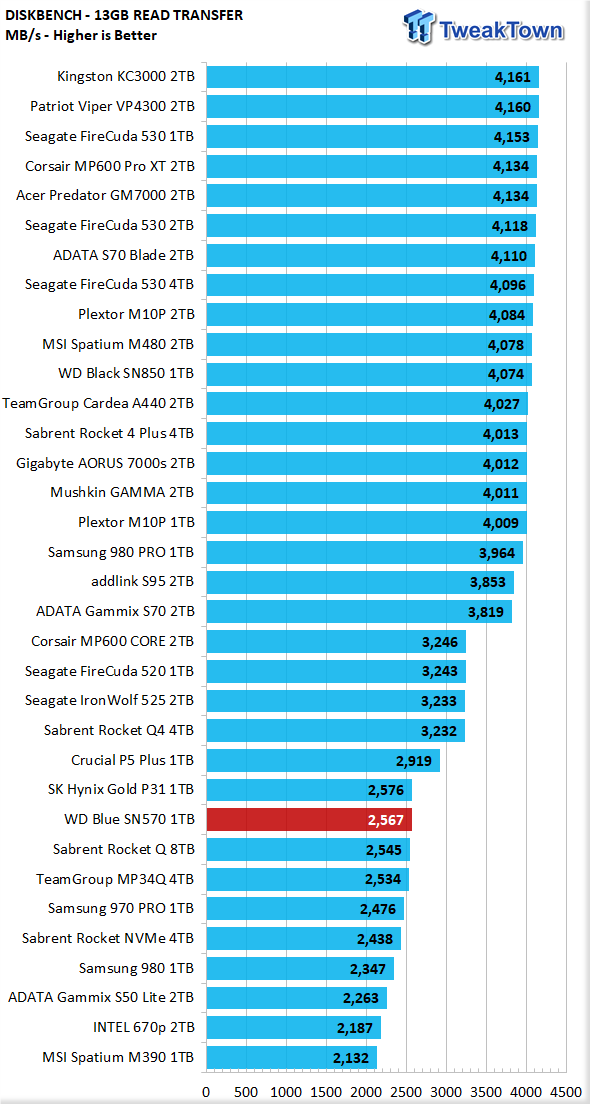
Consumer tasks are mostly read, and as such, this is where we need to see great performance for a drive to make the cut. Look at that, would you? The SN570 is essentially tied with the Gold P31 for the best-read performance we've ever extracted from any Gen3 consumer SSD. Outstanding. It has to be BiCS 5.
Game Level Loading
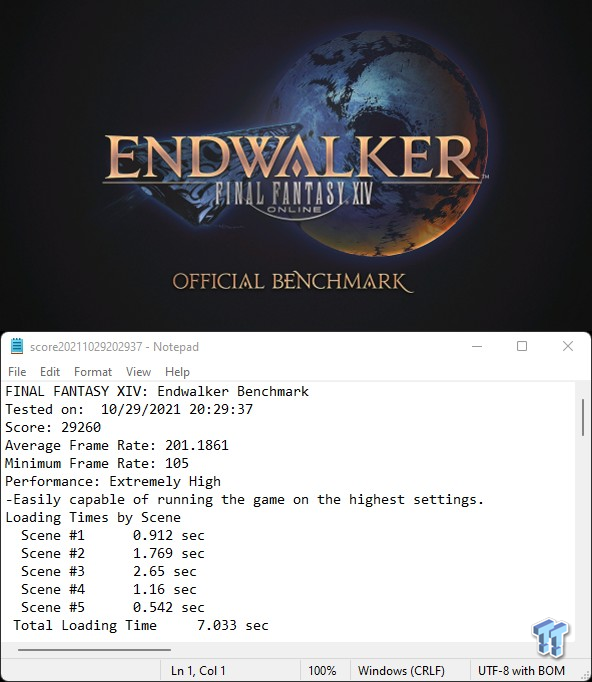
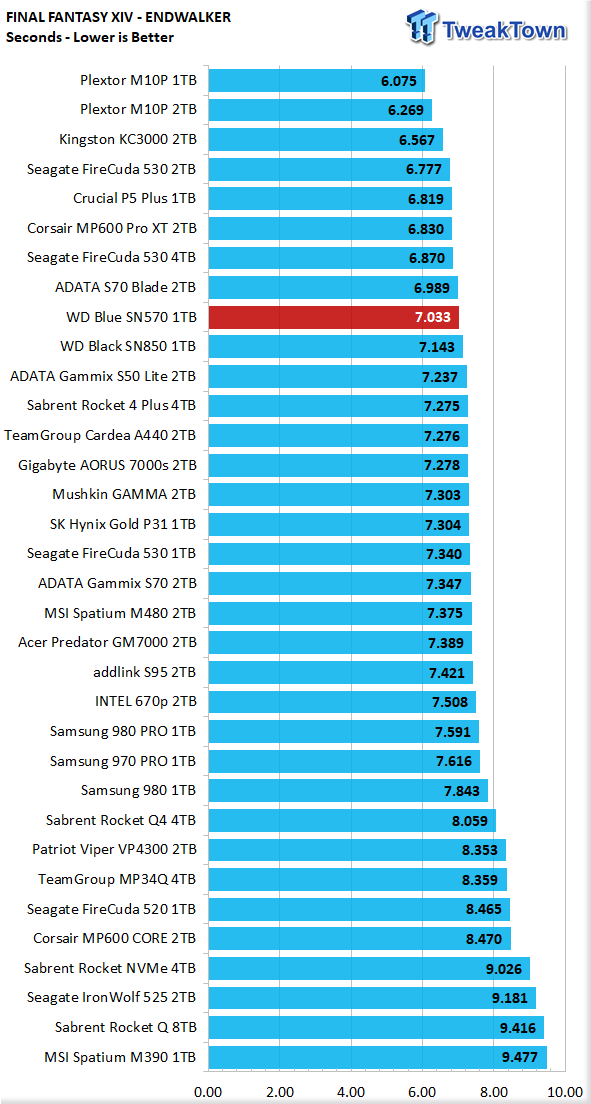
Gaming is a performance metric that matters to the majority of DIY consumers, especially to the enthusiast crowd that TweakTown caters to. We consider this result proof positive that the SN570 is BiCS 5 based. As an HMB DRAMless Gen 3 device, it simply could not be beating the drives it's beating without having superior performing flash. Look at where the Samsung 980 and the Spatium M390 DRAMless SSDs land on our chart. Groundbreaking.
PCM10 Storage Tests
PCMark 10 Storage Test is the most advanced and most accurate real-world consumer storage test ever made. There are four different tests you can choose from; we run two of them.
The Full System Drive Benchmark and the Quick System Drive Benchmark. The Full System Drive Benchmark writes 204 GB of data over the duration of the test. The Quick System Drive Benchmark writes 23 GB of data over the duration of the test. These tests directly correlate with mainstream user experience.
PCMark 10 Full System Drive Benchmark
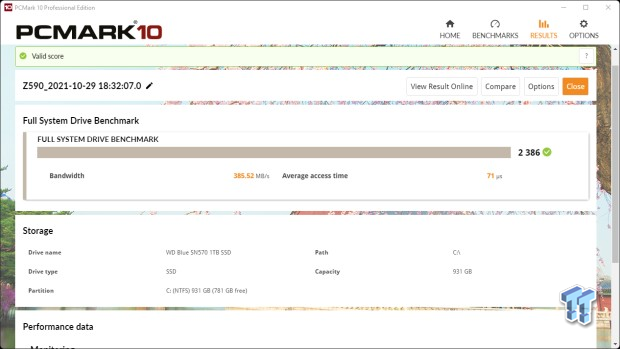
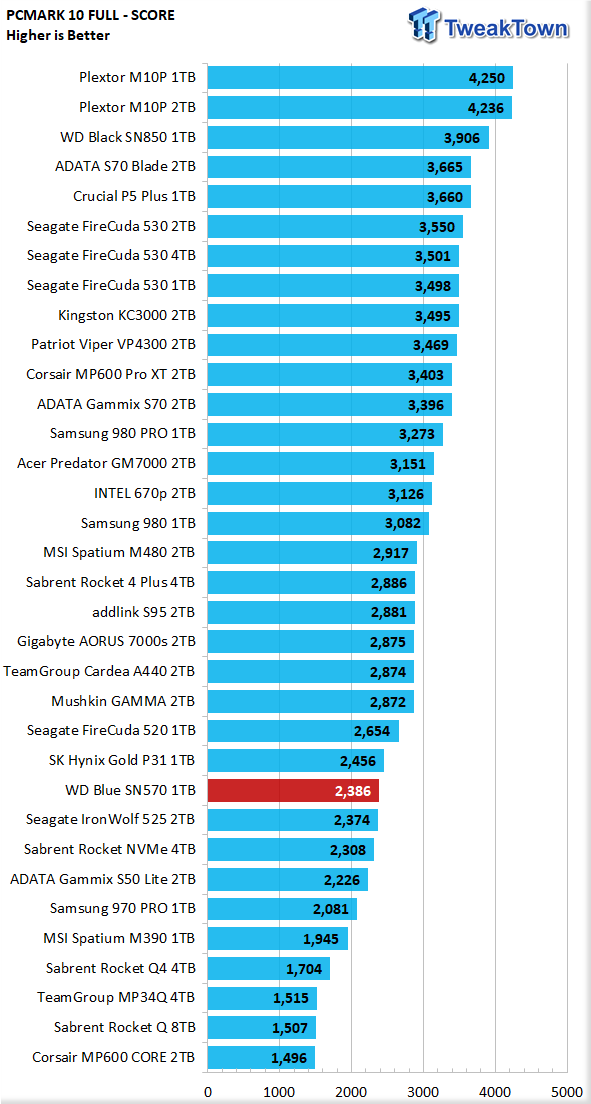
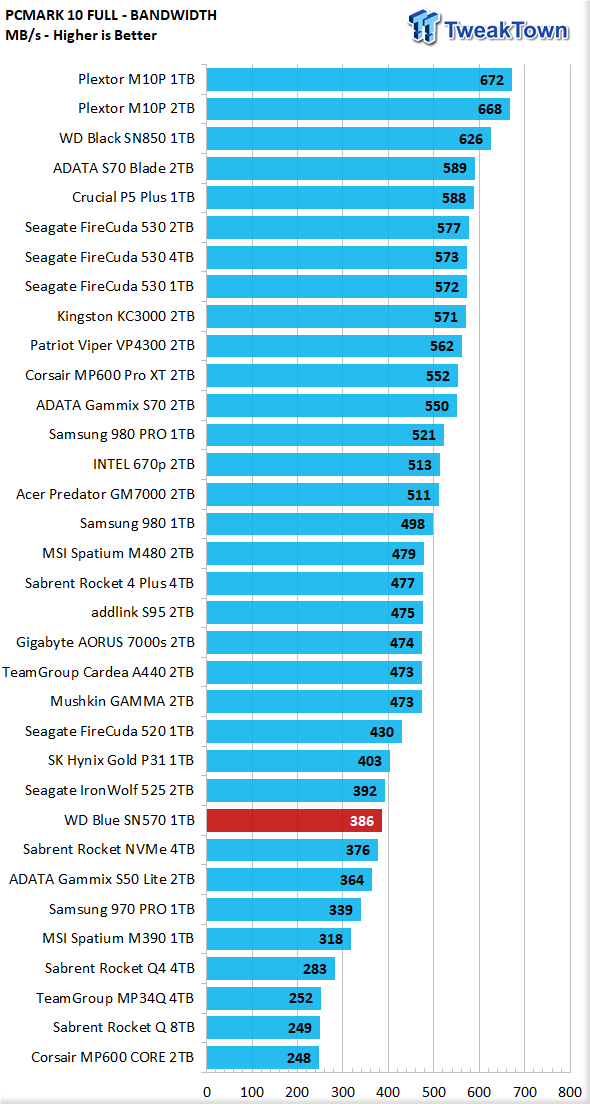
This particular test writes over 204GB data and covers a broad range of common consumer tasks, including booting Windows 10, file transfers, Adobe and Office applications, and startup times for games including Battlefield V, COD Black Ops 4, and Overwatch. Unlike synthetic numbers, this is comprehensive real-world data which is why we use it to rank SSDs in terms of user experience.
There is a lot of writing involved with this test, so the SN570 is at somewhat of a disadvantage here. However, 386 MB/s storage bandwidth is very respectable, certainly plenty enough for a value SSD.
PCMark 10 Quick System Drive Benchmark
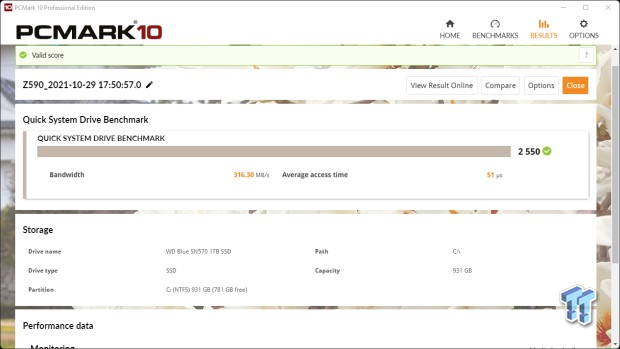
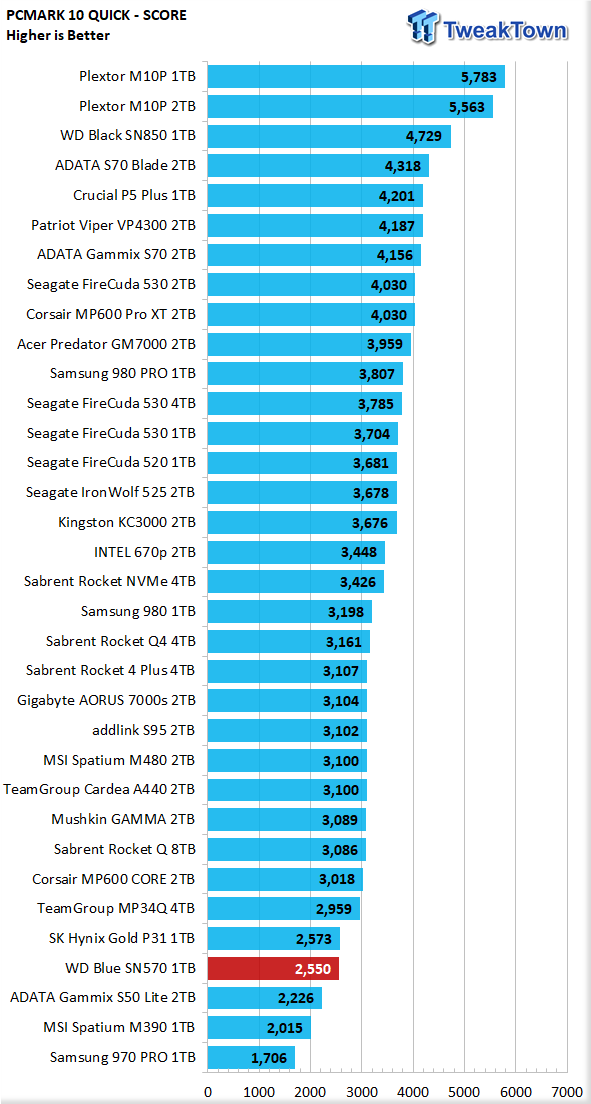
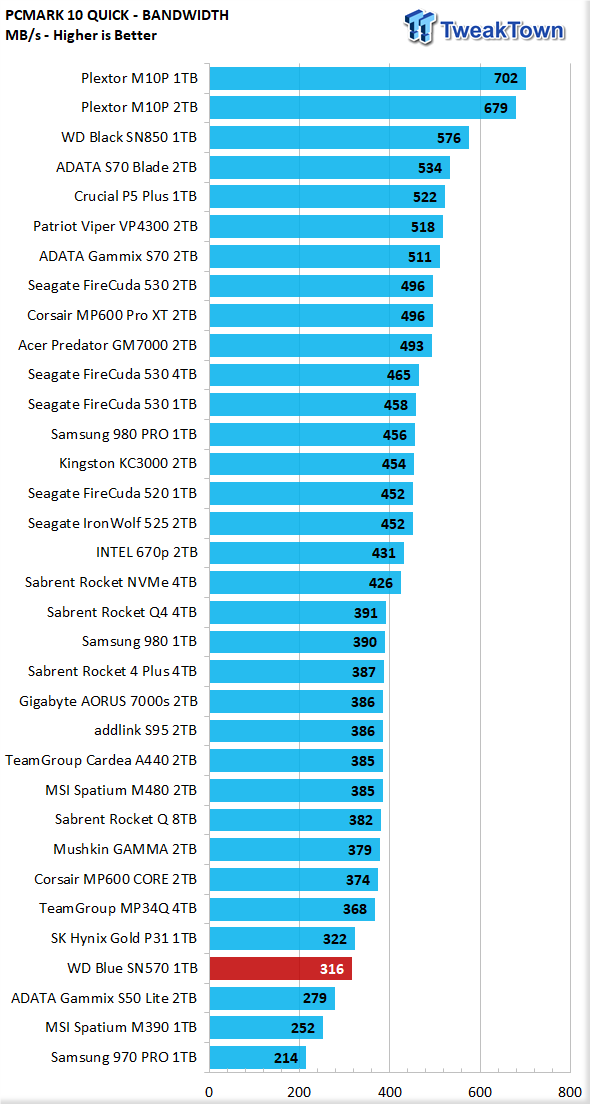
We were expecting a bit better here, but again it's still plenty acceptable for a $110 SSD, especially when you consider how good this drive is at other tasks like gaming.
Final Thoughts
As we see it, the Western Digital WD Blue SN570 1TB DRAMless SSD is right in there, with Samsung's 980 as being the best value proposition currently available. The 980 proves to be better at tasks when there is a good amount of writing in play. The SN570 can serve data to the host faster than the 980 and is far better at gaming. Keep in mind that consumers read data frequently and write data infrequently.
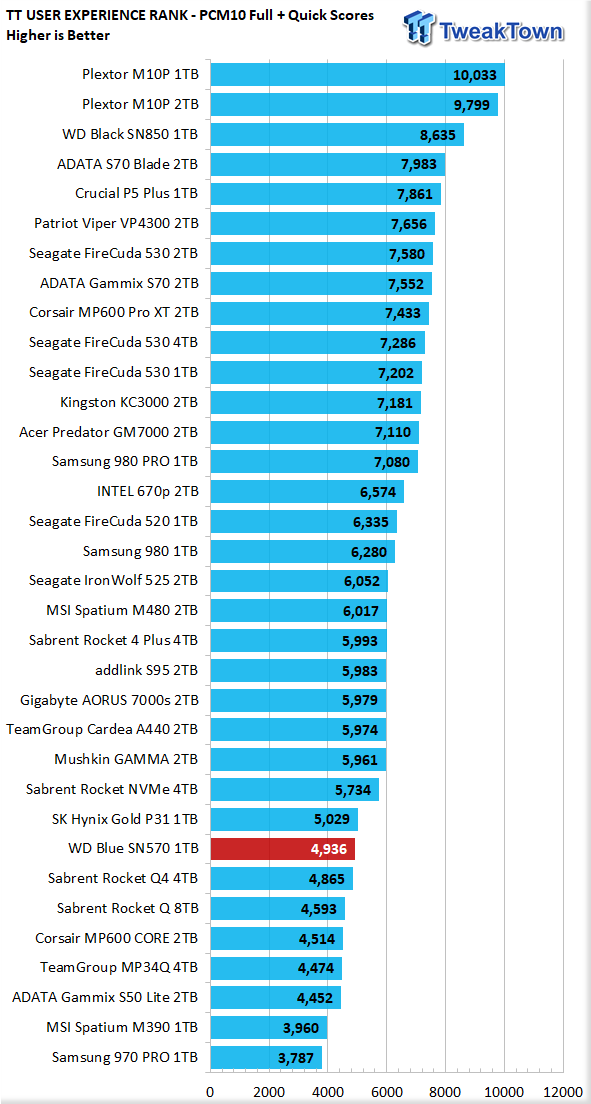
We rank SSDs in terms of overall user experience (performance where it matters most) as expressed by PCMark 10 storage tests. We want to see a minimum of 4,000 here for a value drive. The SN570 1TB gives us nearly 5,000, so it passes with flying colors.
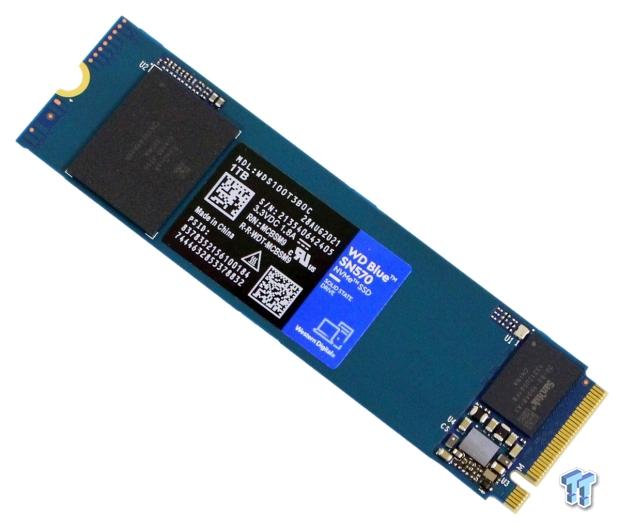
Thanks to the WD Blue SN570, we've gotten our first taste of BiCS 5, and man, it tastes good. Even Gen3 and DRAMless could not hold back the beast. As mentioned, this is the first time any HMB SSD has shown itself to be a superior gaming SSD. Absolutely stunning when you consider it is the 9th best gaming SSD we've ever tested. Again, it's even better at gaming than almost ALL Gen4 SSDs, including WD's own SN850 Black. It may well be the best value proposition ever offered to this point and has earned one of our highest awards.
Pros
- Endurance
- Gaming
- Pricing
Cons
- Sustained Write

Performance |
90% |
Quality |
95% |
Features |
90% |
Value |
100% |
Overall |
94% |
TLC, single sided, cool running, affordable, and a gaming powerhouse to boot.

What's in Jon's PC?
- CPU: AMD Ryzen 7800X 3D
- MOTHERBOARD: GIGABYTE AORUS Master X670E
- RAM: Kingston Fury Renegade 7200MHz 32GB
- GPU: ZOTAC AMP Extreme GeForce RTX 4090
- SSD: Crucial T700 2TB Gen5
- OS: Windows 11 Pro
- COOLER: Lian Li Galahad 360 AIO
- CASE: Lian Li Lancool III
- KEYBOARD: Corsair K65 RGB Mini
- MOUSE: SteelSeries AEROX 5 Wireless
- MONITOR: ASUS ROG Strix PG27AQN 360Hz 1440p ULMB2
Similar Content
Related Tags

